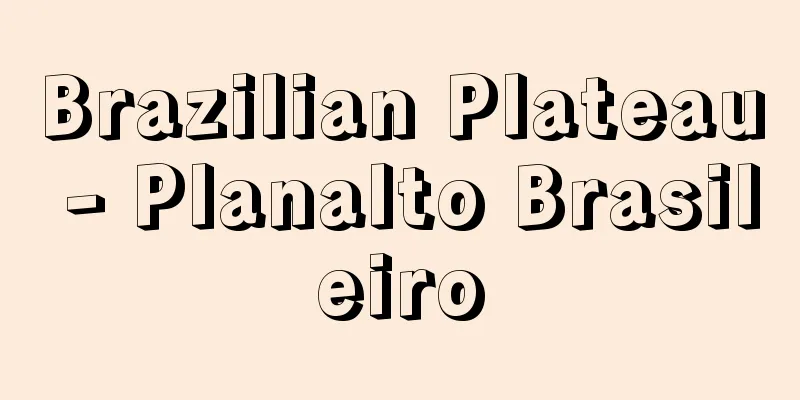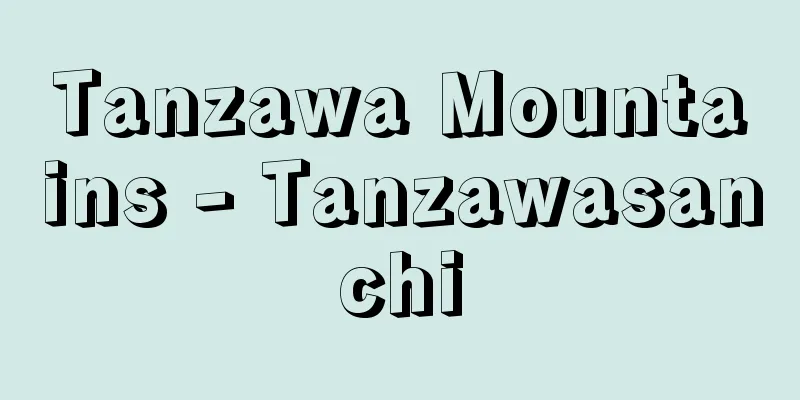Brazilian Plateau - Planalto Brasileiro

|
A vast area of ancient rocks in the eastern central part of South America. Also called the Brazilian Shield, it includes most of central and southern Brazil and parts of Bolivia, Paraguay, and Uruguay. In the narrow sense, it refers to the plateau that stretches across the three states of Minas Gerais, Goiás, and São Paulo in the southeast of Brazil, and is called the Planalto Central in Brazil. In the broad sense, the Brazilian Plateau is a triangular tilted massif with one side along the southeastern coast of Brazil, stretching for about 3,000 km, and gently sloping from the coastal area facing the Atlantic Ocean in the form of steep cliffs to the Amazon lowlands in the north and the Paraná-Paraguay lowlands in the west. The basement is made up of Precambrian granite, gneiss, schist, and quartzite, but most of it has been denuded, and Paleozoic and later strata have been layered on top of it to form gently rolling hills, the Central Plateau, and the Mato Grosso Plateau. However, the coastal areas still contain mountain ranges such as Espinhaço and Mantiqueira, which are made up of ancient rocks, and high peaks such as Mount Bandeira (2,890m), and these areas contain abundant deposits of minerals such as iron, manganese, and gold. In general, the southern part of the country has good climate conditions, fertile soil, and high agricultural productivity, but the inland areas are mostly semi-arid and are largely undeveloped except for being used for livestock farming. The Central Plateau is a plateau-like highland area 500 to 1,000m above sea level, and forms part of the watershed between the Amazon and La Plata river systems, with Brazil's capital, Brasilia, located in the center. Source: Encyclopaedia Britannica Concise Encyclopedia About Encyclopaedia Britannica Concise Encyclopedia Information |
|
南アメリカ中部東寄りに広がる古期の岩石から成る広大な地域。ブラジル楯状地とも呼ばれ,ブラジルの中部から南部にかけての大部分とボリビア,パラグアイ,ウルグアイの各一部を含む。狭義にはブラジルの南東部,ミナスジェライス,ゴイアス,サンパウロの3州にまたがって広がる高原地帯をさし,ブラジルでは中央高原 Planalto Centralと呼ぶ。広義のブラジル高原は,約 3000kmに及ぶブラジルの南東海岸を一辺とする三角形の傾動地塊で,急崖をなして大西洋にのぞむ沿岸部から北のアマゾン低地,西のパラナ=パラグアイ低地に向ってゆるやかに傾斜する。基盤は先カンブリア時代の花崗岩,片麻岩,結晶片岩,ケイ岩などから成るが,大部分削剥され,その上に古生代以降の地層が重なってゆるやかに起伏する丘陵や,中央高原,マトグロッソ高原などをつくっている。しかし沿岸部には古期の岩石から成るエスピニャソ,マンティケイラなどの山脈やバンデイラ山 (2890m) をはじめとする高峰が残っており,これらの部分に鉄,マンガン,金などの鉱物資源が豊かに埋蔵されている。概して南部は気候条件がよく,土壌も肥沃で,農業の生産性が高いが,内陸部は半乾燥地帯が多く,牧畜に利用されるほかは大部分未開発。中央高原は標高 500~1000mの台地状の高原地帯で,アマゾン,ラプラタ両水系の分水界の一部をなしており,中央部にブラジルの首都ブラジリアが立地する。
出典 ブリタニカ国際大百科事典 小項目事典ブリタニカ国際大百科事典 小項目事典について 情報 |
>>: Brazil - Federal Republic of Brazil
Recommend
Impact crusher
...It is widely used for crushing raw materials i...
Relocation expenses - tetenhi
…It was established in 1974 to replace the unempl...
Hector - Hector (English spelling)
A hero in Greek mythology. The greatest warrior o...
Musatov, AI (English spelling) MusatovAI
...Soviet realistic novels for children were form...
Khawarij - Khawarij is
The first political and religious party in Islam. ...
Fruit wine - Kashu
...However, compared to traditional koji white sa...
Awa Shrine Ruins - Awa Shrine Ruins
This is one of the water-eroded caves found in var...
Illustrated biography of the saint Honen
It tells the story of the life of Honen (Genku), ...
Laundry shop - Araimonoya
…In the Azuchi-Momoyama period, a craftsman calle...
Pile driver - Pile driver
Machines that drive piles into the ground. There a...
Syringa
...A deciduous shrub of the Oleaceae family nativ...
Katsura Harudanji
A Rakugo performer from Kamigata. The first Shund...
Shoichiro Shiraishi
A wealthy merchant from Akamagaseki, Nagato Provi...
Variable costs - kahenhi
...However, in traditional economics, this expend...
Ikashiba Fisheries - Ikashiba Fishing
...These fishing methods are mainly applied to oc...









